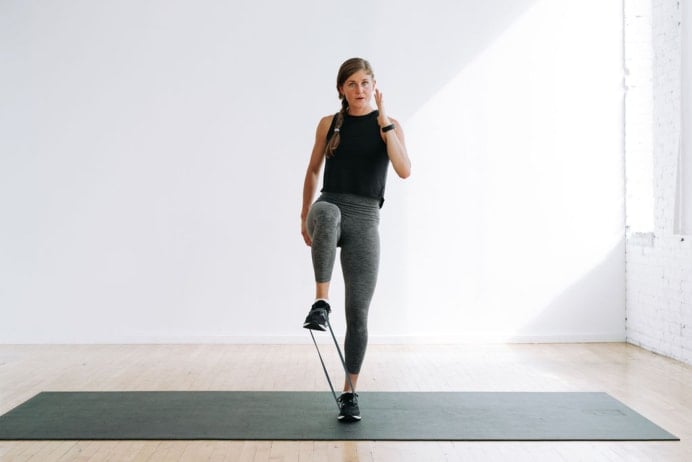
What Is Fasted Cardio?
Have you ever wondered if exercising on an empty stomach is a good idea, especially for women? Fasted cardio is often suggested as a way to burn more fat and improve performance. Some research supports these claims, but the jury’s still out on its effectiveness for fat loss and athletic performance. Let’s dive into what we know and what you should consider before making it a regular part of your morning workout routine.
Quick Links:
- Potential Benefits
- Drawbacks and Considerations
- Best Practices for Women
- Who Should Avoid It
- FAQs
- The Bottom Line
You might have heard the theory: if you do one of my home workouts first thing in the morning (before you’ve had your breakfast), your body, low on its usual fuel source (glucose), will switch to burning stored fat instead. Sounds like a shortcut to fat loss, right?
This is the theory behind fasted cardio – you’re simply doing a workout to increase your heart rate on an empty stomach. Many people work out on an empty stomach first thing in the early morning (after an overnight fast). However, if you practice intermittent fasting, a fasted workout might be 6-8 hours after eating.
While the appeal of greater fat burning during your workout is understandable, the science on whether fasted cardio truly leads to greater overall fat loss long-term isn’t fully conclusive.
The truth is, research on the effectiveness of fasted cardio is mixed, and it’s especially important for women to understand the nuances. While some studies suggest fasted exercise can lead to higher fat oxidation during lower-intensity workouts, this effect often diminishes with more intense exercise. Plus, much of this research has focused on men, so applying it directly to women isn’t always accurate given our unique hormonal profiles.
I have personally found that I have more energy (and see better results) when I go into a workout with a little bit of protein, carbs and electrolytes.
Dehydration can lead to fatigue, reduced energy levels and decreased workout performance, so I add LMNT electrolytes to my water bottle before every workout to keep me properly hydrated.
Ultimately, whether or not you can squeeze in a snack or meal before exercising may impact your performance, motivation and results. Whether fasted cardio is right for you depends on your individual goals and how your body responds. Here’s everything you need to know about fasted cardio so you can decide whether it’s best for your fitness journey.
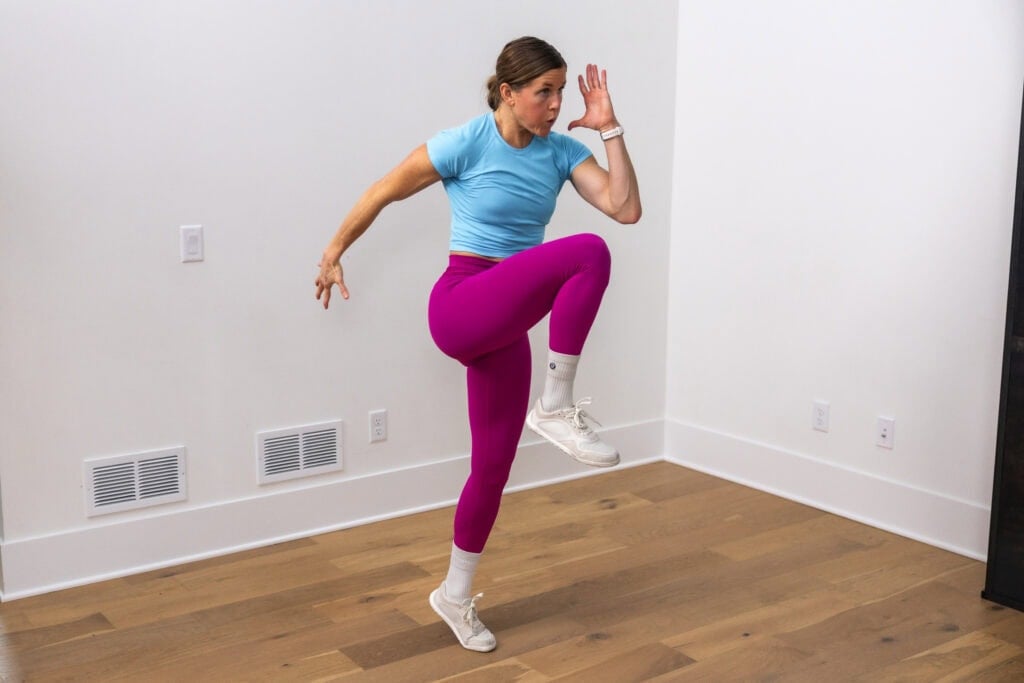
Potential Benefits
While the fat-loss benefits are debated, fasted cardio can offer some advantages that might align with your lifestyle.
If your schedule is tight, skipping a pre-workout meal can free up time, allowing you to fit in your exercise without the extra prep and digestion time. As a mom of 3, I spent many years doing fasted workouts because it made more sense for my schedule.
If you practice intermittent fasting, fasted cardio naturally fits into your eating window. This is convenient because it allows you to train before your first meal of the day.
Some research suggests that fasted cardio might help your body handle sugar better and improve your insulin levels and sensitivity. However, you could also end up with low blood sugar and might not perform as well during your workout.
Some women genuinely prefer working out on an empty stomach, finding they feel more energetic or experience less digestive discomfort without food beforehand.
Drawbacks and Considerations
Though there are some benefits to fasted cardio, it’s important to be aware of the potential downsides. Pushing your body when it’s running on empty can lead to:
- Decreased performance and fatigue: You might find yourself struggling through your workout, feeling sluggish and unable to push as hard.
- Muscle breakdown: Instead of just burning body fat, your body might start breaking down lean muscle mass for fuel, which is the opposite of what we want!
- Risks like low blood sugar and dehydration: This can show up as dizziness, lightheadedness or even fainting.
- Potential hormonal disruption, especially for women: Some research suggests that fasted cardio might throw your hormones out of whack, which can have various negative impacts on your well-being. For example, when you combine fasting with exercise, especially intense workouts, it can increase your stress hormones, like cortisol. While a little stress can be good, too much isn’t ideal for your overall health or how well you perform.
If you plan to do a high-intensity (HIIT) workout, fasted cardio may lead to lightheadedness, dizziness, shaking or passing out.
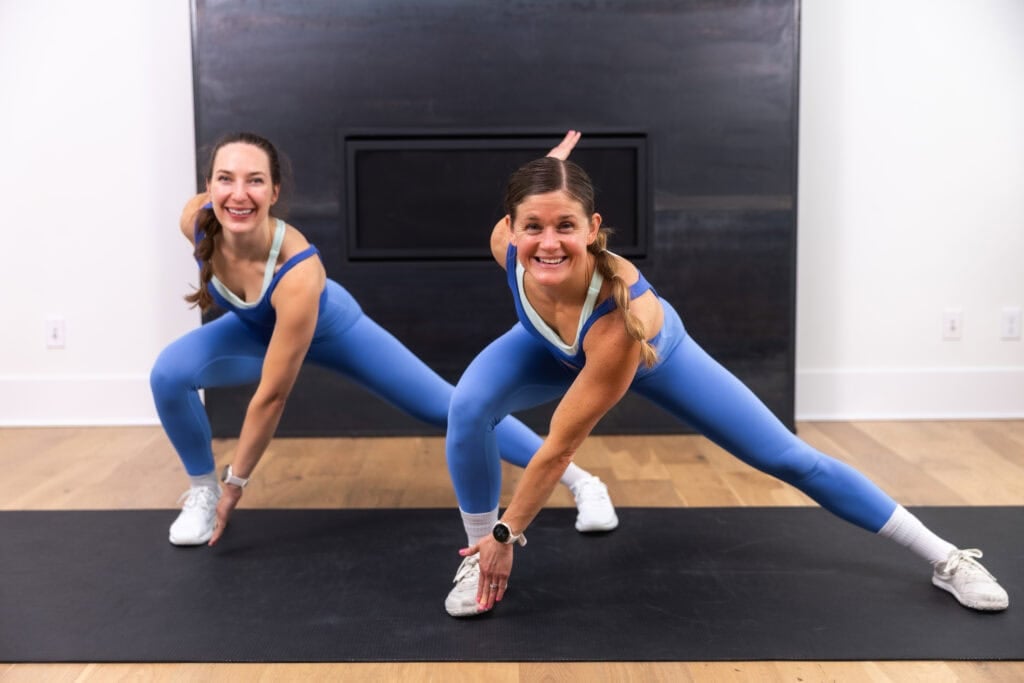
Best Practices for Women
As a certified personal trainer, I do not recommend fasted cardio for women’s health. Women’s bodies are generally more sensitive to changes in energy balance and stress hormones.
You might notice an impact on metabolic health, hormonal balance, menstrual cycle and thyroid function if you regularly workout on an empty stomach. Fasted cardio can potentially lead to muscle loss and increased stress.
My recommendation for women is to fuel your body strategically for your training session.
Before strength training, I always advise having around 15 grams of protein. This provides crucial building blocks for your muscles and helps with repair and recovery.
If you’re heading into a cardio session, aim for a pre-workout snack that includes about 15 grams of protein and 30 grams of carbohydrates. This combination ensures you have both immediate energy and sustained fuel to power through your workout, helping you perform your best and feel strong.
Aim to eat protein and carbohydrates within 45-60 minutes post-workout to rebuild your muscle glycogen stores.
Hydration is also really important in supporting your energy levels. Electrolytes are essential minerals (like sodium, calcium and potassium) that your body needs to function. We lose electrolytes when we sweat, and they need to be replenished to prevent muscle cramps, headaches and energy dips. I have LMNT in my water bottle during every workout to keep me properly hydrated.
If your goal is fat loss, it’s important to keep in mind that fat loss is determined by your total energy balance – calories consumed versus calories burned. Whether or not you exercise fasted, your overall calorie deficit (eating fewer calories than you burn) is what’s crucial for weight loss.
Non-fasted or “fed” cardio refers to performing cardio exercises within a few hours after you’ve eaten. This gives your body readily available carbohydrates during exercise and can be beneficial for providing sustained energy throughout your workout.

Try LMNT
Who Should Avoid It
While fasted cardio works for some, it’s definitely not for everyone. I’d recommend steering clear of fasted cardio if you:
- Have a medical condition like diabetes, reactive hypoglycemia or issues with low blood sugar or blood pressure.
- Have hormonal imbalances. Fasted cardio can further disrupt hormonal balance, potentially worsening conditions like PCOS (polycystic ovary syndrome).
- Are pregnant. Pregnancy can increase the risk of complications from low blood sugar, so I recommend avoiding fasted cardio during pregnancy.
- Are just starting your fitness journey. If you’re a fitness beginner, your first step should be learning how your body responds to exercise and building a consistent routine. Once you’re more in tune with your body, you can explore if fasted cardio is right for you.
FAQs
While fasted cardio might burn slightly more fat during your workout, this doesn’t lead to greater fat loss in the long run. Ultimately, your overall energy balance is what matters most when it comes to fat loss. This means the total calories you consume versus the total calories you burn throughout the day. Focus on that, and you’ll be on your way to achieving your weight loss goals.
20 minutes of cardio can be enough for a workout, particularly if you’re a beginner or are short on time. This is a great starting point for improving your cardiovascular health and boosting your fat metabolism. Start with 20 minutes and gradually increase the duration of your cardio over time as your cardio endurance improves and your goals change.
Intermittent fasting may help you naturally reduce your daily calorie intake by limiting your eating window. When combined with exercising in a fasted state, your body may rely more on fat stores for fuel. That said, there is limited research available that supports this. Ultimately, consistently maintaining a calorie deficit is most important in impacting your body composition long term.
The Bottom Line
As a certified personal trainer, my recommendation for women is 15 grams of protein before a resistance training workout or 15 grams of protein and 30 grams of carbohydrates before aerobic exercise.
That said, I understand that fasted physical activity may be more convenient based on your schedule.
If you’re generally healthy and want to try fasted cardio, start slowly. Be sure to hydrate before and during your workout with electrolytes. It’s really important to replenish fluids lost through sweat, especially if you’re working out on an empty stomach.
Start with 10 minutes of a low-intensity or moderate-intensity steady-state cardio session (like walking, running or biking). If you feel well, gradually increase your workout time.
Be sure to refuel with a high-protein breakfast or snack post-workout.
Ultimately, whether you should try fasted cardio depends on how your body responds and your overall fitness goals. You should do what makes you feel your best, but you also need to be fueling your body for performance and recovery.
More Posts
Fitness EducationPin This Article on Understanding Fasted Cardio
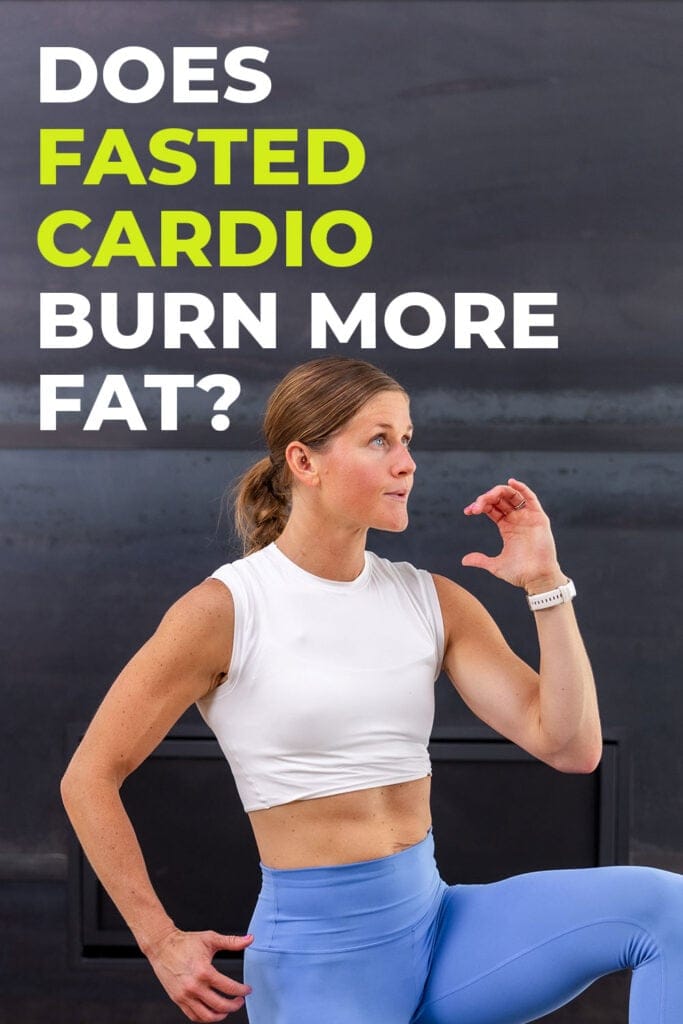
This post is sponsored by LMNT. All opinions are my own. Thank you for supporting Nourish Move Love.










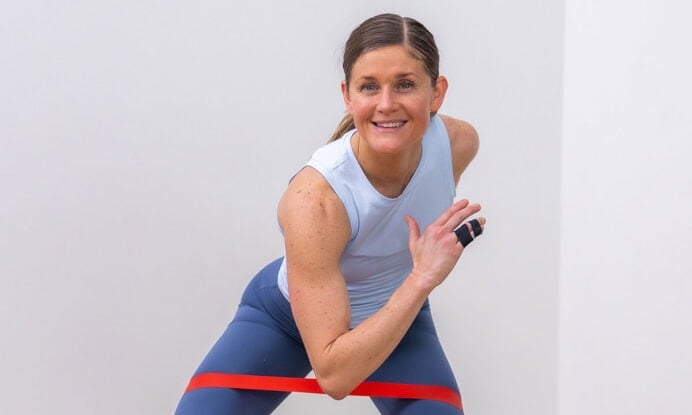
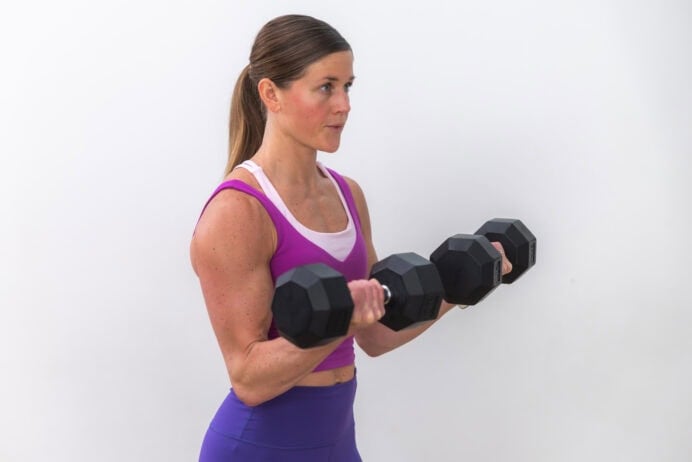
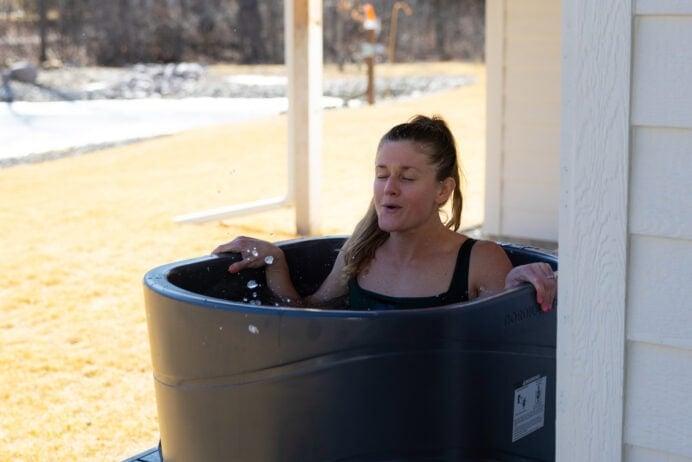
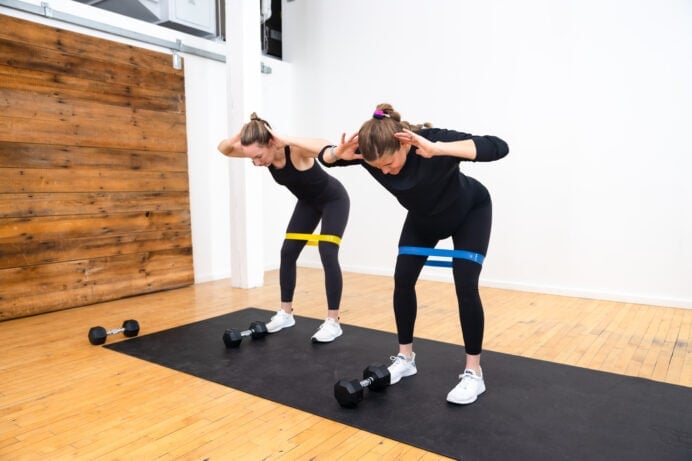
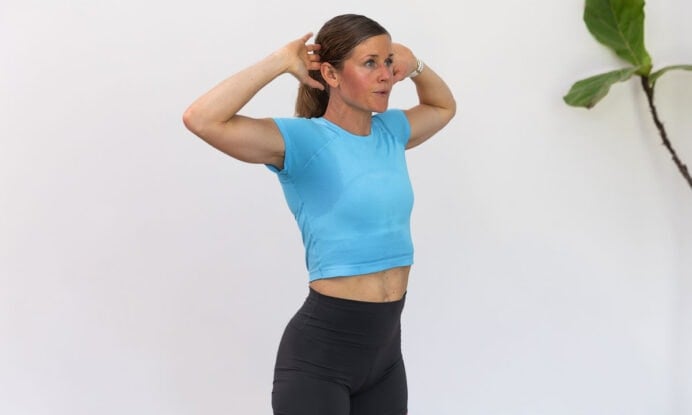
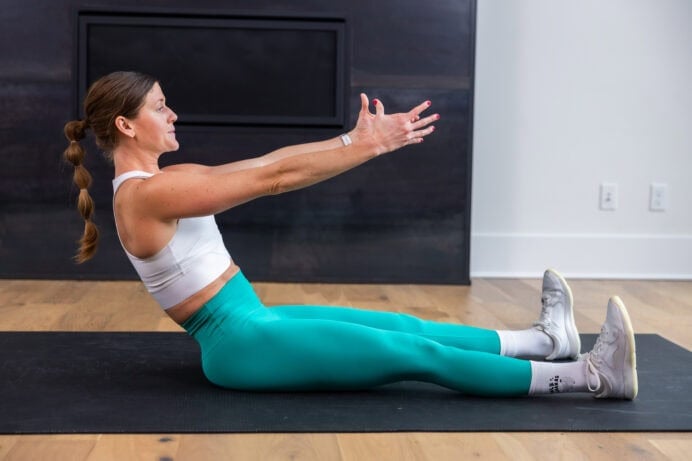
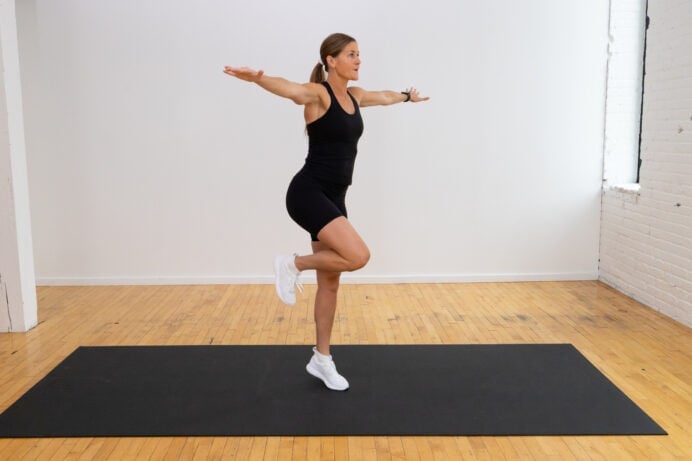
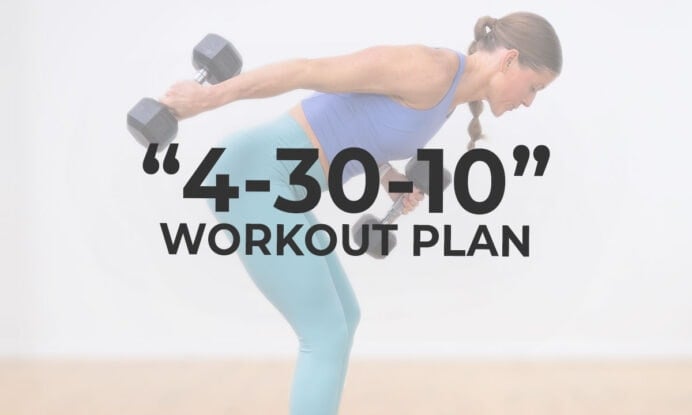

What are your recommendations for a 56 year old woman with regards to pre-workout snack to assist with weight GAIN. (currently 5’6″ and 115lb) I work out first thing in the morning on a tight schedule with work – aiming more for strength and mobility. I would love to try a pre-workout snack to see if this gives me the boost I need. I do drink a post workout protein drink made with raw milk. Some examples of a good pre-workout snack would be great and a timeline suggestion – how long before workout do you need to have this snack? Thank you!!
Hi Crystal! If your goal is weight gain, I’d still aim for around 15g of protein before your workout and 30g of protein after your workout. I personally prefer a protein bar or clear protein before working out (typically 30-60 minutes before my workout). That sits best for me, but you could do some yogurt, cottage cheese, eggs, etc. If you need more suggestions for post workout meals with 30+ grams of protein, search “high protein” on NML and recipe ideas will come up! -Lindsey
Thanks for this insightful explanation! I’d love some practical examples of what a 15gram protein and 30gram carb pre-workout snack might look like? I like to exercise first thing in the morning and my appetite often isn’t awake then, so it ends up being fasted cardio. Would like to try this with a well-balanced snack beforehand and see what happens!
Hi Jo-Marie! Great question – I personally prefer a protein bar or clear protein before working out (typically 30-60 minutes before my workout). That sits best for me, but you could do some yogurt, cottage cheese, eggs, etc. Search “high protein breakfast” on NML for a full list of my favorite breakfast ideas with 30+ grams of protein for after your workout! -Lindsey